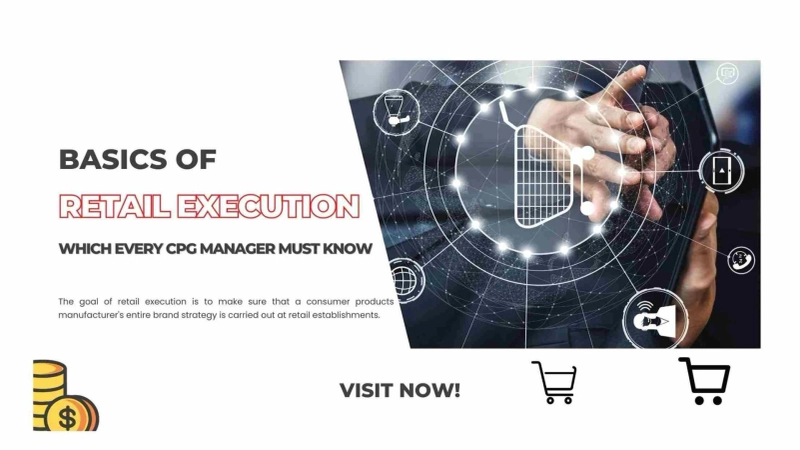The goal of retail execution is to make sure that a consumer products manufacturer\'s entire brand strategy is carried out at retail establishments. Retail execution simply seeks to place the appropriate goods on the appropriate shelf at the appropriate moment. From relationship management to store audits and in-store merchandising, this procedure covers a wide range of tasks. Since consumers make 70% of their purchasing decisions at the moment of sale, retail execution is important. For CPGs to execute retail well, they need thorough, timely insights about what\'s occurring on the shelf. But because there are so many SKUs to keep track of, sales representatives run the danger of spending more time on audits and less time on useful retail execution tasks.
If a product is out of stock, at an unexpected place, or if a competitor\'s product is more alluring due to a promotion, a customer may reconsider their decision. A single category\'s sales may increase by three to five percent with effective retail execution.
Which store conditions must be measured?
Manufacturers that are informed about shelves create retail audit criteria while focusing on the customer. This framework for guidelines identifies the best brands for each situation, in the proper bundles, at the right pricing, in the targeted channels.
In general, a store audit work list could include Stock standing (shelf and back stock), Location of Products in Store, Planogram compliance like shelf placement, number of facings, SKUs, and missing or incorrect shelf tags, Execution of promotional materials and in-store displays of a high standard, Adjacencies and activities of competitors and Pricing conformity
Conducting store audits
You have more control over your resources if you send your own specialised sales teams to visit retail locations often in each region. Since your teams will inevitably battle more for your brand, it also has a high "ownership index." But it may be exceedingly expensive to train and inspire these teams. The team can be built and trained by third-party merchandising service businesses, on the other hand. But because their performance is judged differently from your internal framework, assessing their achievement might be difficult. Regardless of who handles retail execution, it extends beyond audits to capture value by taking consumer, shopper, and customer incentives into account when done correctly.
By developing retailer connections, Fields teams may also increase the amount of product lines in a customer\'s account. Informing merchants of planogram revisions To improve exposure, construct displays, clean cooler, and showcase things. the effect of merchandising resets on sales and Reproduce effective marketing techniques in all stores
How to perform a successful retail execution
Multiple teams rely on store-visit data, so sales reps must acquire it promptly and make it available right away. This is necessary since teams frequently need to move rapidly to adapt to change. 44 percent of respondents still utilise manual techniques for retail execution tasks, which frequently provide inaccurate and out-of-date data, which is an issue. The real-time data and detailed insights that are so important for enhancing salesforce efficiency, fostering improved decision-making, and boosting revenue growth are missed by CPG teams.
Forward-thinking In order to maximise the efforts of their field employees, CPGs are looking to sophisticated analytics technologies like computer vision (CV) and digital picture identification. CV gives a real-time picture of how items are doing on the shelf, allowing CPGs to quickly address problems. Additionally, CV-enabled audits save auditing time by as much as 60% by automating monitoring. Sales representatives may now focus on bringing their company\'s items in front of customers by visiting more stores, adding value beyond audits, and visiting more locations.



